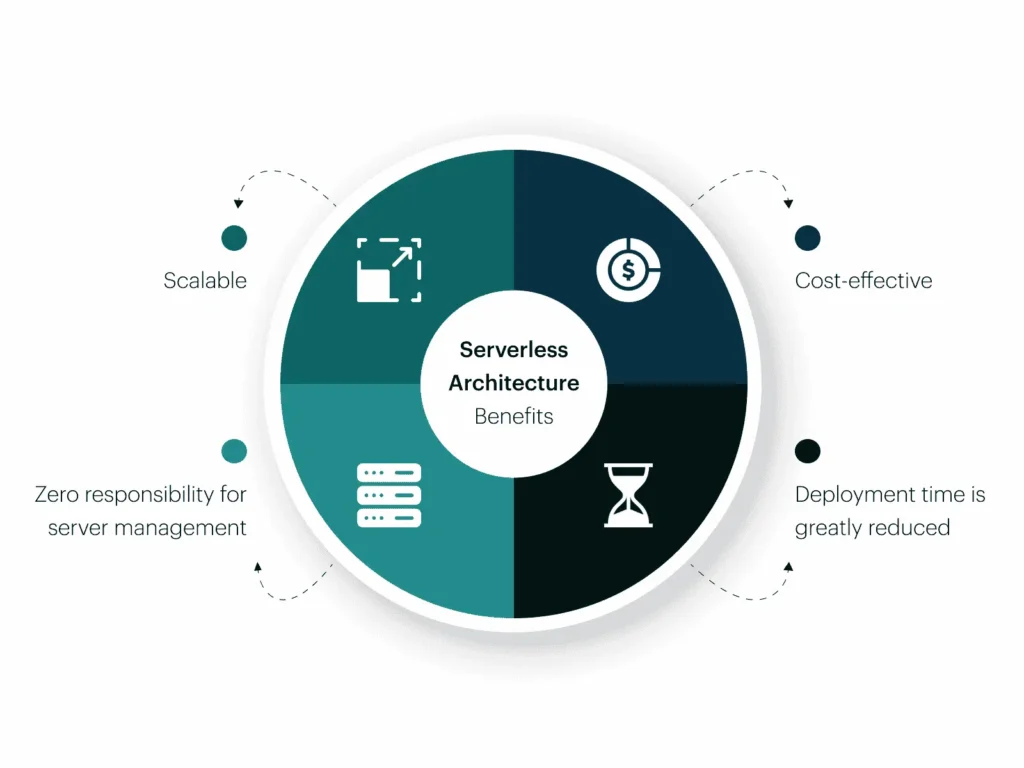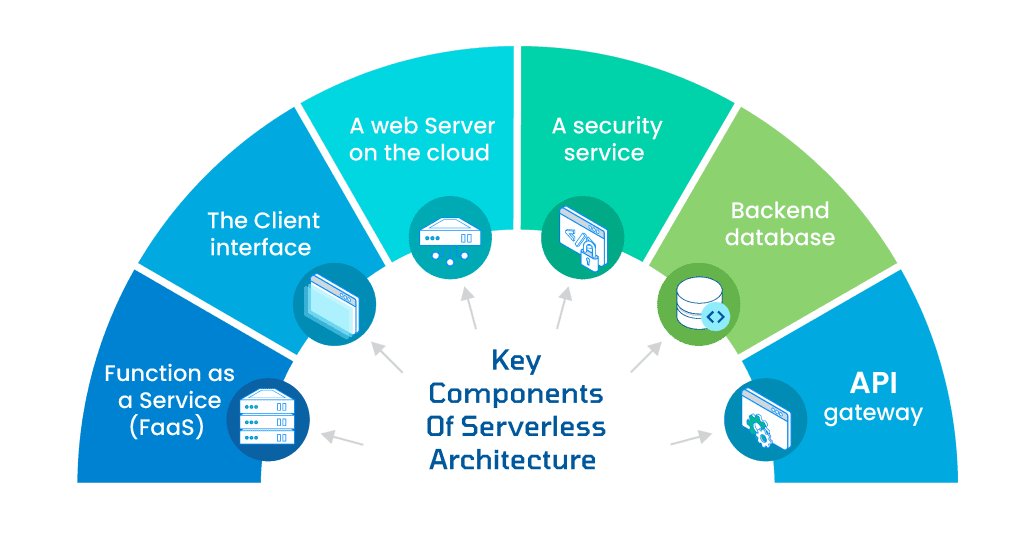How Serverless Computing Examples Drive Digital Transformation?
Serverless computing is transforming the landscape of application development by eliminating the need for developers to manage traditional server infrastructure. In a serverless setup, the cloud provider automatically handles all the underlying infrastructure, from scaling to maintenance, allowing developers to focus purely on coding. Serverless computing examples highlight how this approach benefits businesses through cost savings, scalability, and rapid deployment, making it especially attractive for any software development company aiming to streamline operations and reduce costs. Here, we explore various serverless computing examples across industries, showcasing how this technology is reshaping the future of cloud applications.
Understanding Serverless Computing
Before diving into specific serverless computing examples, it’s essential to understand what serverless computing truly entails.
Serverless computing is a cloud-native development model where cloud providers dynamically allocate resources for executing code in response to events. Unlike traditional server hosting, serverless platforms operate on a pay-per-use basis, meaning businesses only pay for the exact resources consumed during code execution. This “Function as a Service” (FaaS) model is ideal for event-driven applications, data processing tasks, and real-time applications, where demand fluctuates and scalability is essential. For a software development company, adopting serverless computing can drastically reduce operational overhead and improve the efficiency of deploying scalable applications.
Popular serverless platforms include:
- AWS Lambda
- Google Cloud Functions
- Microsoft Azure Functions
- IBM Cloud Functions
Each of these platforms allows developers to build and deploy code without worrying about provisioning servers or handling scaling, making serverless computing examples powerful tools for building efficient, cost-effective applications.
Core Benefits of Serverless Computing
To understand the value of serverless computing examples, let’s examine some key benefits. With the digital landscape constantly evolving, businesses seek ways to optimize costs, scale efficiently, and innovate rapidly. Serverless computing has emerged as a pivotal solution, offering substantial advantages that align with modern needs. Below, we dive into the primary benefits and real-world implications of adopting serverless architecture.

Image source: Markovate
Cost Efficiency
In today’s competitive market, controlling operational costs is a priority for businesses of all sizes. Serverless computing introduces a revolutionary cost model, where companies only pay for the actual computation time and resources used. Unlike traditional server setups where infrastructure must be maintained regardless of usage, serverless eliminates the expense of idle resources.
An online retail company might see significant spikes during peak shopping seasons such as Black Friday and Cyber Monday. Typically, maintaining servers year-round to handle these short-lived bursts leads to unnecessary costs. By using serverless computing, this company can scale resources during high-traffic periods and scale down afterward. According to a report from CloudHealth by VMware, organizations have reduced cloud spending by up to 30% through efficient resource allocation with serverless models.
Automatic Scaling
Scalability is crucial for applications that handle unpredictable or seasonal traffic. Serverless platforms automatically scale based on demand, ensuring consistent performance without manual intervention. This is essential for businesses that need to support a dynamic user base and avoid downtime during surges.
Consider a live polling app that supports audiences for national events. During a major broadcast, millions of users might access the app simultaneously, causing a sudden surge in traffic. With serverless computing, this app can automatically adjust its resources, handling high loads during events and scaling down once traffic subsides. Research by Flexera shows that companies that leverage auto-scaling capabilities report better cost control and improved operational efficiency.
Reduced Management Overhead
Reducing the complexity of managing infrastructure is a significant relief for companies that prefer to focus on their core development tasks. By outsourcing infrastructure management to cloud providers, organizations can streamline their operations, reduce DevOps costs, and enhance overall productivity. A startup developing a SaaS platform for customer engagement can benefit from serverless solutions by letting cloud providers handle tasks like server maintenance, patch management, and backup configurations. According to Gartner, IT teams that adopt serverless architecture report a 20% reduction in system administration workload. This allows developers to dedicate more time to creating features and optimizing user experiences, fostering innovation.
Rapid Deployment and Prototyping
In an era where speed to market is critical, serverless functions enable rapid deployment and modification. Developers can build, test, and deploy applications faster without worrying about underlying infrastructure. This flexibility aligns with agile development practices and empowers teams to iterate efficiently.
A fitness app startup looking to experiment with a new feature—such as personalized workout reminders—can deploy the feature using serverless functions from platforms like AWS Lambda. This allows for quick prototyping, user feedback collection, and updates, all without significant downtime or resource allocation. Studies show that organizations utilizing serverless computing report 40% faster release cycles, which is essential for maintaining a competitive edge in tech-driven markets.
In summary, serverless computing offers clear advantages in terms of cost efficiency, scalability, reduced management overhead, and rapid development. By examining these serverless computing examples, businesses can better appreciate how adopting this model can align with their growth strategies and operational goals.
Key Features of Serverless Computing
Serverless computing has gained significant traction in recent years due to its powerful and unique features. These features set it apart from traditional cloud computing models and make it an attractive choice for developers and businesses seeking flexible, scalable, and efficient solutions. To understand the value of serverless computing examples, let’s examine some of the core features that drive its appeal and practicality.

Image source: Vpsie
Event-Driven Architecture
One of the most defining characteristics of serverless computing is its event-driven nature. In this architecture, code execution is triggered by specific events such as user interactions, data changes, or scheduled tasks. This dynamic approach allows for a highly responsive system that adapts in real time to user needs or external inputs. An e-commerce platform could use serverless functions to handle tasks such as processing user orders or updating inventory in response to purchases. When a customer makes a purchase, an event triggers a function to manage the order, send a confirmation email, and update the inventory database—all in real time. This feature enhances responsiveness and provides seamless user experiences.
Auto-Scaling and Load Management
The ability to scale seamlessly is one of the standout features of serverless computing. Serverless platforms automatically adjust resources to accommodate varying levels of traffic, ensuring applications maintain optimal performance during peak usage times without manual scaling efforts. Consider a streaming service that experiences a spike in users during a major sports event. Serverless computing can scale up resources automatically to support thousands of concurrent viewers and scale back down once the event ends. This automatic scaling feature helps maintain a smooth user experience and prevents resource wastage. Flexera’s 2024 Cloud Report highlights that businesses using serverless platforms report significantly improved handling of peak traffic loads compared to traditional hosting methods.
Pay-As-You-Go Pricing
Cost management is a significant factor when considering infrastructure solutions. Serverless computing operates on a pay-as-you-go model, where users are billed only for the computation time and resources they actually use. This approach is highly economical, especially for applications with inconsistent or unpredictable workloads. A financial analytics firm that runs reports at irregular intervals throughout the day could leverage serverless computing to save on infrastructure costs. Instead of maintaining servers that might sit idle between reporting tasks, the firm pays only for the time functions run. This model provides financial flexibility and minimizes unnecessary expenses.
Reduced Operational Complexity
Serverless computing simplifies IT infrastructure management by shifting server-related responsibilities to cloud providers. This reduces the operational burden on development teams and frees them to focus on core tasks such as writing and deploying code rather than server maintenance and configuration.
A tech startup developing a mobile app can benefit from serverless computing by not needing to manage infrastructure. Cloud providers like AWS, Microsoft Azure, and Google Cloud handle tasks like server maintenance, scaling, and updates. This feature allows small teams to focus on rapid development and deployment cycles, enhancing productivity.
These key features of serverless computing highlight why it is increasingly favored by businesses seeking to build responsive, cost-effective, and scalable applications. From event-driven architecture to reduced operational complexity, serverless models empower teams to innovate faster and adapt more effectively to the demands of the digital world.
Each of these features underscores the versatility of serverless computing examples, enabling businesses to optimize their applications for performance, cost, and user experience.
Have a Project Idea in Mind?
Get in touch with Savvycom’s experts for a free consultation. We’ll help you decide on next steps, explain how the development process is organized, and provide you with a free project estimate.
Top Serverless Computing Examples and In-Depth Analysis
Below, we explore some powerful serverless computing examples and how they drive real-world applications across industries. Each example highlights specific serverless platforms and includes real-world use cases to illustrate the practical applications.
1. Data Processing and ETL (Extract, Transform, Load)
- Platform: AWS Lambda, Google Cloud Functions
- Use Case: Data analytics, business intelligence
Many serverless computing examples involve ETL tasks in data processing pipelines. AWS Lambda, for instance, automates the process of collecting, transforming, and loading data from various sources into data warehouses like Amazon Redshift. This setup enables businesses to integrate massive datasets from disparate systems, making it valuable for analytics, reporting, and machine learning. A retail company uses AWS Lambda to process customer purchase data in real time, enabling personalized marketing recommendations. This example demonstrates the flexibility of serverless computing examples in handling large-scale data processing.
2. IoT (Internet of Things) Applications
- Platform: Microsoft Azure Functions, Google Cloud Functions
- Use Case: Real-time IoT data processing, device monitoring
In IoT applications, large volumes of data are generated from interconnected devices. Azure Functions can analyze and respond to real-time IoT data, making it ideal for applications in smart cities, manufacturing, and healthcare. A manufacturing company uses Azure Functions to monitor equipment sensors, instantly alerting operators to maintenance needs. This serverless computing example shows how real-time data processing drives operational efficiency in industries.
3. Backend for Mobile Applications
- Platform: Google Cloud Functions, Firebase Functions
- Use Case: Mobile backend, push notifications, real-time data updates
Many serverless computing examples are utilized as mobile backends to handle tasks like user authentication and push notifications. Firebase Functions, for instance, enables developers to add backend logic to apps without managing servers. A food delivery app uses Firebase Functions to handle user sign-ins, order notifications, and live location tracking. This serverless computing example showcases scalability, especially during high-demand periods.
Overcoming Serverless Challenges
While serverless computing examples offer substantial benefits, there are also challenges to consider:
-
Cold Starts: Cold starts occur when a serverless function is called after being inactive, resulting in a brief delay. Techniques like “warming up” functions or choosing optimized platforms can help mitigate these delays.
-
Vendor Lock-In: Many serverless computing examples depend on proprietary services, leading to vendor lock-in. For flexibility, adopting a multi-cloud strategy can help mitigate dependency on a single provider.
-
Complexity in Monitoring and Debugging: Serverless functions typically have limited visibility, which can complicate debugging. Third-party monitoring solutions can help track and resolve issues.

Future of Serverless Computing
The future of serverless computing examples promises even greater efficiency, flexibility, and innovation. As cloud providers continue to enhance serverless platforms, expect improved performance, more serverless-compatible tools, and enhanced multi-cloud solutions. Emerging use cases like AI-driven applications and blockchain are likely to adopt serverless architectures for handling complex, event-driven tasks at scale.
Conclusion
Serverless computing is a transformative model that empowers businesses to innovate faster, reduce costs, and respond dynamically to changing demands. The serverless computing examples highlighted above demonstrate how versatile and scalable serverless architecture can be for businesses across sectors. By leveraging serverless technologies, companies are driving greater operational efficiency and unlocking new growth opportunities.
For those looking to implement or expand serverless capabilities, Savvycom offers expertise in serverless architecture, cloud-native development, and custom solutions. Whether you need guidance on serverless strategy or hands-on development support, our team can help you harness the full potential of serverless computing examples to achieve your business goals.
Tech Consulting, End-to-End Product Development, Cloud & DevOps Service! Since 2009, Savvycom has been harnessing digital technologies for the benefit of businesses, mid and large enterprises, and startups across the variety of industries. We can help you to build high-quality software solutions and products as well as deliver a wide range of related professional services.
Savvycom is right where you need. Contact us now for further consultation:
- Phone: +84 24 3202 9222
- Hotline: +1 408 663 8600 (US); +612 8006 1349 (AUS); +84 32 675 2886 (VN)
- Email: [email protected]


